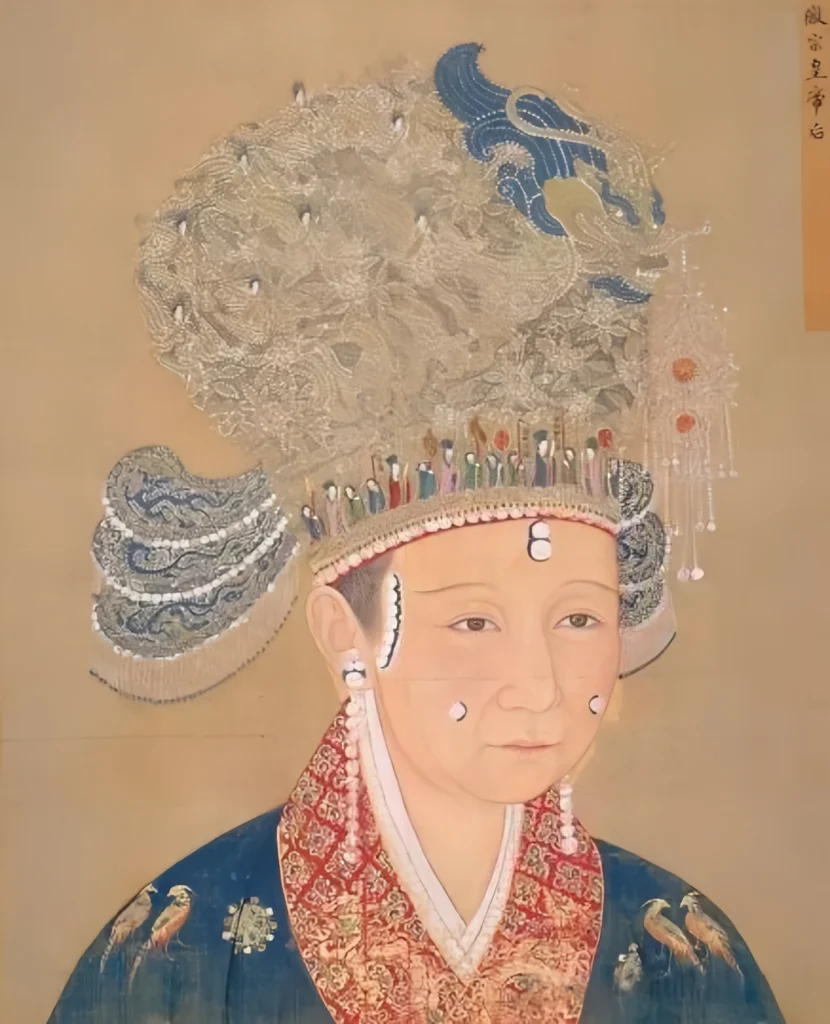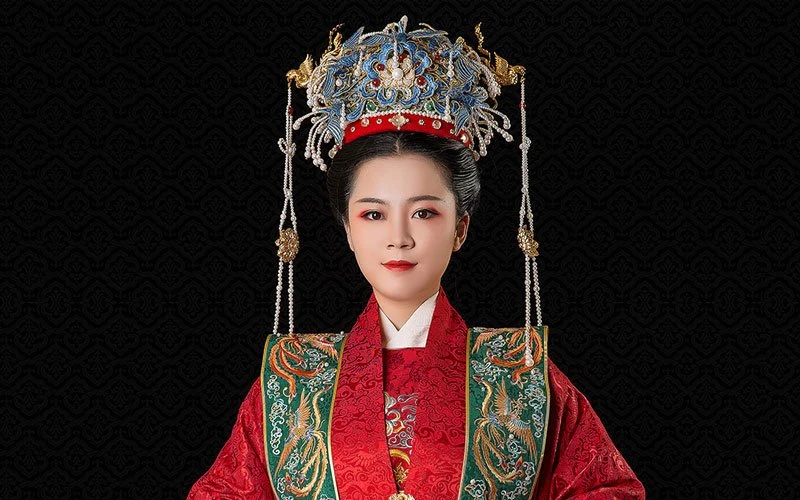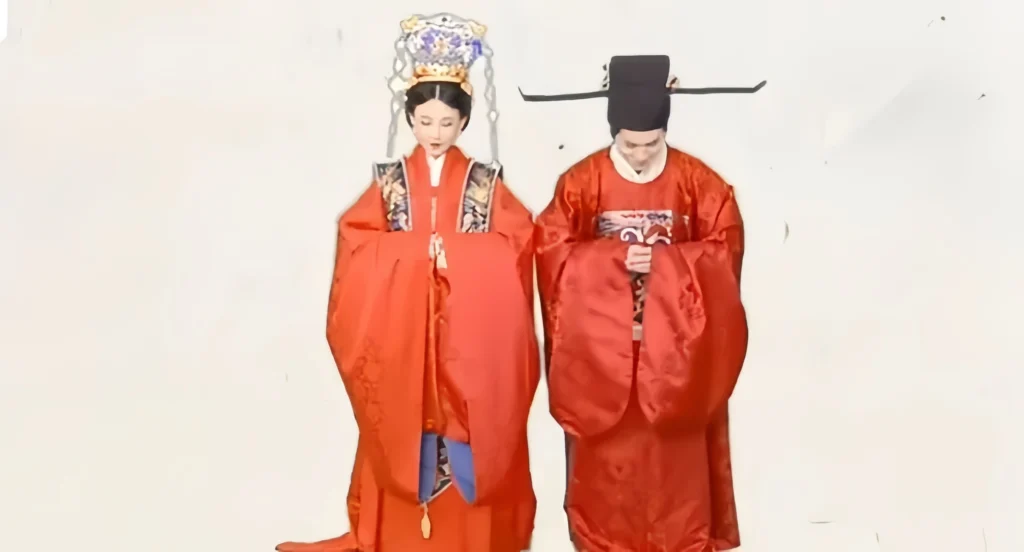Ming Hanfu Wedding Traditions: 5 Steps to Plan Your Ceremony

Ming Hanfu wedding traditions blend timeless romance with the elegance of ancient Chinese culture, creating a dreamlike celebration. Featuring intricate Hanfu bridal attire and rituals from the Ming Dynasty (1368–1644), these weddings captivate with their rich symbolism and grandeur. From phoenix crowns to incense offerings, Ming Hanfu wedding traditions offer a unique way to honor Chinese cultural wedding heritage. Ready to plan your 2025 wedding? Follow these five steps to bring Ming wedding rituals to life.
Ming Hanfu wedding traditions blend timeless romance with ancient Chinese culture. To explore the broader evolution of Chinese wedding dresses, see this article.
01 Select Stunning Ming Hanfu Attire
Ming Hanfu wedding traditions shine through the couple’s attire. For the bride, a mangpao robe with dragon-phoenix motifs, paired with a dasha and xiapei cape, exudes luxury. The “Three Dragons and Two Phoenixes” crown, adorned with pearls and gold, adds regal splendor. Grooms wear a duo niu round-collar robe or a porcelain white dragon standing-collar robe for daytime events, symbolizing wisdom. Explore authentic Hanfu bridal attire at Hanfu Today to ensure your outfits reflect Ming wedding rituals’ opulence.
For the bride, a mangpao robe with dragon-phoenix motifs, paired with a xiapei cape, exudes luxury. Discover more about the Phoenix Crown Xiapei.
-1024x1024.png)
02 Create an Authentic Venue Atmosphere
The venue sets the stage for Ming Hanfu wedding traditions. Choose a traditional cultural hall adorned with red silk, paper cuttings, and ancient lanterns to evoke a Ming-era ambiance. As evening falls, glowing lanterns enhance the Chinese cultural wedding vibe. Use blue-and-white porcelain tableware and antique wine pitchers for the banquet, ensuring every detail aligns with Ming wedding rituals. A well-curated setting immerses guests in the elegance of your Hanfu bridal attire and ceremony.
After many site visits, the chosen venue is often a traditional cultural hall, where the interior is decorated with red silk, paper cuttings, lanterns, and other traditional elements. When the evening falls, the ancient lanterns gently light up, evoking the feel of a bygone era and adding a magical touch to the ceremony. The wedding banquet is filled with carefully selected, ancient-style dinnerware, from blue-and-white porcelain bowls holding fruits to antique-style wine pitchers.
Every detail in the setting, from the lighting and ornaments to the tableware, is chosen with the utmost care to ensure an authentic, ancient Chinese aesthetic.

03 Incorporate Key Ming Wedding Rituals
The flow of a Hanfu wedding follows ancient customs, often based on texts like the Rituals of Marriage (Yili) and the Great Ming Code (Daming Lu). These texts lay out the traditional rituals of high-class weddings, from noble marriages to royal unions. Here are some key rituals included in a Ming-style Hanfu wedding:
- Xiaomian (Shaving the Forehead)
Before the formal ceremony begins, the bride takes part in the “Xiaomian” ceremony. In ancient times, this involved the bride having the fine hair around her forehead and temples shaved off to signify the beginning of a new life in marriage. While this is rare in modern weddings, it was believed to ensure a smooth, prosperous marriage. - Incense Offering to Ancestors
Once the auspicious time arrives, the groom, assisted by his groomsmen, lights incense and makes his way into the ceremony hall to pay respects to the ancestors. - Qin Ying (Greeting the Bride)
At the start of the ceremony, the officiant announces the arrival of the bride. The groom remains in place, waiting with anticipation for the moment when he can greet his bride. - Bing Shan (Fan Ceremony)
As the bride steps out, her attendants open their round fans to reveal her slowly emerging from behind them. This moment is often described as “striking the entire audience with her beauty.” - Dian Yan (Gift of Wild Geese)
The groom presents a symbolic gift to the bride: a pair of wild geese. Since geese mate for life, they symbolize lifelong loyalty and fidelity between the couple. The bride accepts the gift, walking behind the groom as they enter the hall, with a red silk ribbon linking them. - Wo Guan (Hand Washing Ceremony)
The bride and groom wash their hands in porcelain bowls, symbolizing the cleansing of past burdens and preparing to start their new life together. - Three Bow Ceremony
This is the most iconic part of the wedding:
- The couple bows to the heavens and the earth (symbolizing the union of two souls in nature).
- They bow to their parents as a gesture of gratitude.
- Finally, they bow to each other, pledging mutual respect and devotion.
-1024x1024.png)
- Jie Yan (Cutting the Hair and Binding the Marriage)
After taking their seats, the officiant cuts a small lock of hair from the couple’s heads and ties them together with a red tassel, symbolizing their lifelong bond and the finality of their marriage. - He Jin (Wine Sharing Ceremony)
The couple shares a bittersweet wine (often made from bitter melon), symbolizing the idea that marriage will bring both sweet and challenging moments. Sharing this drink represents facing both joys and hardships together. - Sha Zhang (Tossing Wedding Gifts)
Elder family members throw peanuts, lotus seeds, longans, and lychees at the newlyweds, symbolizing wishes for children, prosperity, and a long-lasting marriage. - Shou He (Holding Hands Ceremony)
Finally, the couple holds hands and walks together, completing the wedding with the beautiful saying, “Hand in hand, we will grow old together.”
With this, the Hanfu wedding ceremony concludes.
While modern society tends to favor simplicity and convenience, many people today still cherish the deep meaning and beauty found in traditional rituals. Although the grandness of ancient Chinese weddings is often overshadowed by more minimalist approaches in modern times, the timeless charm and cultural richness of a Hanfu wedding continue to captivate many young people. Whether it’s the opportunity to experience Chinese culture firsthand or simply to create a lasting memory, Hanfu weddings offer a unique and meaningful way to celebrate love.





Responses